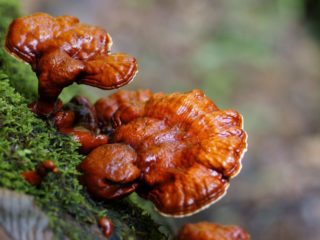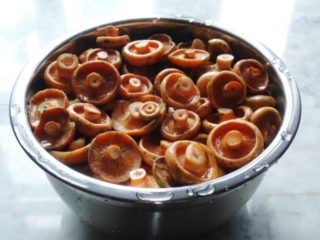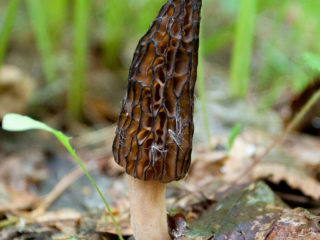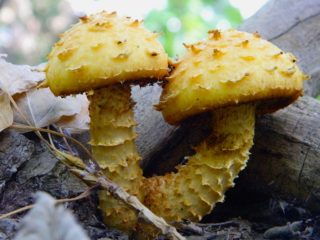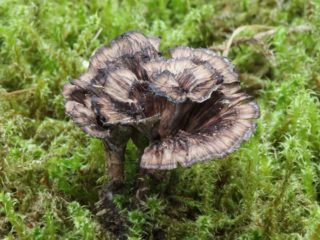Content
Ganoderma southern is a typical representative of polypores from the Polyporaceae family. In total, in the genus to which this mushroom belongs, there are about 80 closely related species. They differ from each other mainly not in their appearance, but in their distribution area. Like all polypores, southern Ganoderma has a different appearance, depending on the substrate on which it grows.
What does southern ganoderma look like?
The fruiting body of the mushroom is of the cap type. Their sizes can be very large. The diameter of the southern Ganoderma cap reaches 35-40 cm, and its thickness reaches 13 cm.
The shape of the fruiting body is flat, slightly elongated. The sessile cap grows to the solid base with its wide side.
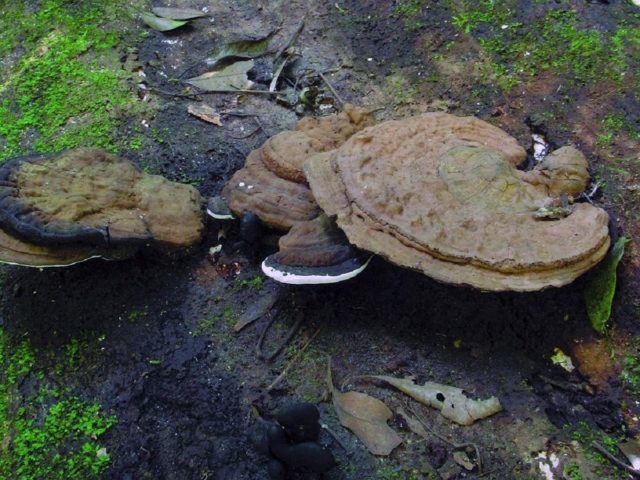
The surface of the mushroom is smooth, but there may be small grooves on it
The colors of the caps are very diverse: brown, gray, black, etc. Often its surface is covered with a layer of spores, which can cause the color of the fruiting body to turn brown.
The flesh of the mushroom is dark red. The porous hymenophore is white.
Where and how does it grow
It prefers to grow in areas with a warm climate (hence the name), but is distributed to the central and northwestern regions of Russia. There have been cases of detection of southern Ganoderma in the east of the Leningrad region.
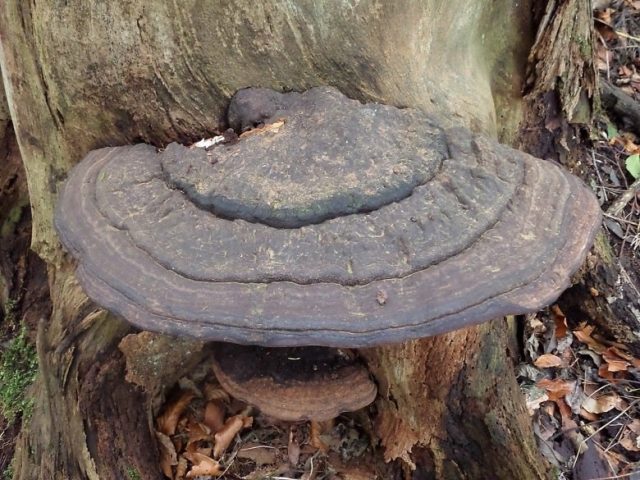
The mushroom grows mainly on dead wood or stumps, but is sometimes found on living deciduous trees
When this species appears on plants, it provokes “white rot” in the latter. But this is not classic sclerotinia caused by marsupial fungi. The mycelium of the tinder fungus is the same color, so the affected leaves and shoots have similar symptoms.
Potential objects of infection may be oak, poplar or linden. This species is a perennial. It exists in one place until it completely absorbs the available substrate.
It is recommended to dispose of plants located in cultivated areas to avoid further spread of the fungus.
Is the mushroom edible or not?
Ganoderma southern is an inedible species. The main reason why it should not be eaten is the very hard pulp characteristic of most tinder fungi.
Doubles and their differences
All representatives of the genus to which Ganoderma southern belongs are very similar to each other.The differences between the species are not striking at first glance, but upon careful study there are several differences in appearance, by which the species can be easily determined.
The maximum degree of similarity of the species in question is observed with Ganoderma flat (another name is artist’s mushroom or flattened tinder fungus). There are differences in appearance and internal structure. The first include the large size of the flat tinder fungus (up to 50 cm in diameter) and its glossy shine. In addition, the upper part of the cap has a more uniform color.

The surface of the flattened tinder fungus has a uniform color
Similar to southern Ganoderma, flat is also inedible and also causes rot in plants. But the color of its mycelium will not be white, but yellowish. Another important difference is the internal structure of the spores and the structure of the cuticle.
Conclusion
Ganoderma southern is a common representative of perennial tinder fungi. This is a typical decomposer that decomposes dead wood and dead wood. In some cases, it leads a parasitic life on trees, slowly but systematically eating the host's body. It is impossible to cure the plant; it should be destroyed as soon as possible to avoid the spread of infection. The southern polypore is inedible due to its high hardness.

